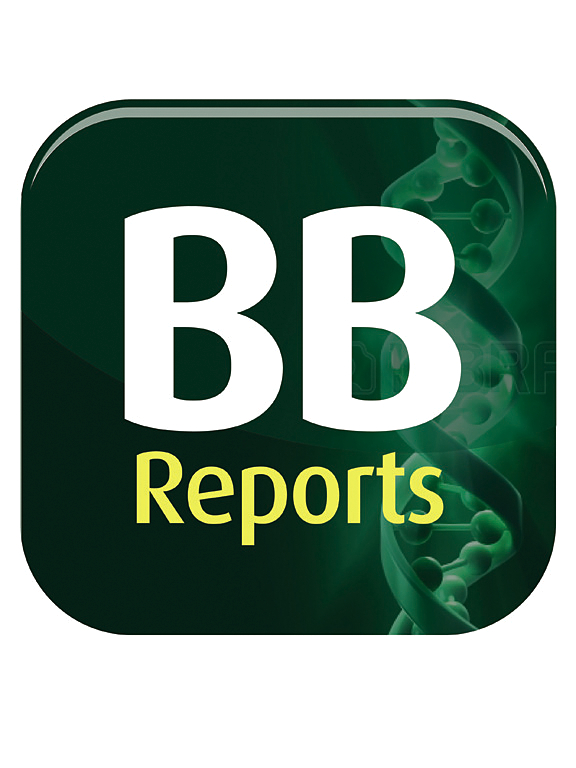基于网络的木瓜苯基异喹啉生物碱合成相关枢纽转录因子鉴定
IF 2.3
Q3 BIOCHEMISTRY & MOLECULAR BIOLOGY
引用次数: 0
摘要
罂粟(Papaver somniferum L.)是世界上最具经济价值的药用植物之一,它是诸如止痛药和其他药物等必需化合物的工业来源。最近,大量的罂粟转录组数据已经可以在公共数据库中访问,这些数据包括不同组织和生态型的数据。尽管这种植物很重要,但在组学水平上,关于罂粟次生代谢产物的调控机制,特别是苯异喹啉生物碱(BIAs)生物合成的调控机制知之甚少。本文采用加权基因共表达网络分析(Weighted Gene co-expression network analysis, WGCNA)对罂粟进行共表达和共调控网络分析,利用RNA-Seq数据推断和揭示罂粟基因相互作用。为了验证可能的枢纽转录因子(TFs),进行了偏最小二乘回归(PLS)和接受者工作特征(ROC)分析。我们鉴定了9个与BIAs生物合成相关的重要共调控模块(包括1501个基因)和hub TF基因,包括WRKY3、WRKY32、MYB3R-5、bZIP、APRR2、MYB43、MYB82、bHLH和WRKY40。结果表明,这些中心基因可能在罂粟次生代谢途径相关基因的共调控中发挥重要作用。此外,我们还发现了与重要共调控BIA模块的hub tf (WRKY和MYB)相关的共同调控基序。我们暗示它们在罂粟次生代谢物的生物合成中具有共同的调节作用。结果表明,这些模块的共表达基因具有共同的调控基序,特别是与每个模块的hub tf相关的基因,它们可能定义了它们的共同调控。具有高诊断价值(AUC = 1)的ROC分析确定了hub TF参与BIAs通路的可能作用。PLS分析显示轮毂TFs (WRKY和bZIP)对相关基因有相当大的影响。我们在组学水平上的WGCNA分析,以及对hub tf的鉴定,突出了这些基因的调控潜力和罂粟BIA生物合成途径中涉及的主要分子机制。这些发现为候选枢纽tf在表达系统中的调控工程提供了有价值的见解。本文章由计算机程序翻译,如有差异,请以英文原文为准。

Network-based identification of hub transcription factors associated with benzylisoquinoline alkaloid biosynthesis in Papaver somniferum
Papaver somniferum L. (Opium poppy) is one of the world's most economically valuable medicinal plants, and it is the industrial source of essential compounds such as painkillers and other pharmecutical drugs. Recently, large amounts of opium poppy transcriptome data have become accessible in public databases, consisting of data on the different tissues and ecotypes. Despite the importance of this plant, there is little information about the regulatory mechanisms involved in secondary metabolites, especially in benzylisoquinoline alkaloids (BIAs) biosynthesis at the omics level in opium poppy. Herein, we employed co-expression and co-regulation network analysis using Weighted Gene Co-expression Network Analysis (WGCNA) to infer and reveal gene interactions in opium poppy by using RNA-Seq data. To validate possible hub transcription factors (TFs), partial least squares regression (PLS) and Receiver operating characteristic (ROC) analyses were conducted. We identified nine significant co-regulated modules (comprising1501 genes) and hub TF genes related to the biosynthesis of BIAs, including WRKY3, WRKY32, MYB3R-5, bZIP, APRR2, MYB43, MYB82, bHLH, and WRKY40. The results suggest that these hub genes can play a vital role in co-regulating genes involved in secondary metabolic pathways in opium poppy. Also, we detected common regulatory motifs related to hub TFs (WRKY and MYB) of important co-regulated BIA modules. We implied their common regulatory role in the biosynthesis of secondary metabolites in the opium poppy. The results illustrated that co-expressed genes of the modules share common regulatory motifs, especially related to hub TFs of each module, and that they may define their common regulation. ROC analysis with high diagnostic value (AUC = 1) identified the possible role of the hub TF involved in the BIAs pathways. PLS analysis showed a considerable effect of hub TFs (WRKY and bZIP) on the related genes. Our WGCNA analysis at the omics level, along with identifying hub TFs, highlights the regulatory potential of these genes and the primary molecular mechanisms involved in the BIA biosynthetic pathway in opium poppy. These findings provide valuable insights for the regulon engineering of candidate hub TFs in expression systems.
求助全文
通过发布文献求助,成功后即可免费获取论文全文。
去求助
来源期刊

Biochemistry and Biophysics Reports
Biochemistry, Genetics and Molecular Biology-Biophysics
CiteScore
4.60
自引率
0.00%
发文量
191
审稿时长
59 days
期刊介绍:
Open access, online only, peer-reviewed international journal in the Life Sciences, established in 2014 Biochemistry and Biophysics Reports (BB Reports) publishes original research in all aspects of Biochemistry, Biophysics and related areas like Molecular and Cell Biology. BB Reports welcomes solid though more preliminary, descriptive and small scale results if they have the potential to stimulate and/or contribute to future research, leading to new insights or hypothesis. Primary criteria for acceptance is that the work is original, scientifically and technically sound and provides valuable knowledge to life sciences research. We strongly believe all results deserve to be published and documented for the advancement of science. BB Reports specifically appreciates receiving reports on: Negative results, Replication studies, Reanalysis of previous datasets.
 求助内容:
求助内容: 应助结果提醒方式:
应助结果提醒方式:


